Cute Fiat 500x handles ‘Minnesota Riviera’
Filed under: Weekly test drives, Autos, Uncategorized
By John Gilbert
If you want to escape from the rigors of Northern U.S. wintertime, what better destination than sunny Italy? It doesn’t seem as logical to go from Italy to Northern Minnesota’s ice-locked clime in January, but that’s what my little red Fiat 500x did for a week.
I knew it was not overmatched, when we got hit with a Duluth-quality blizzard of 6-8 inches of snow, followed by a bone-chilling 20-below-zero frigid spell. My wife, Joan, delivered a bowl of hot oatmeal in the dawn’s early light, and as I finished a follow-up cup of coffee, I stood up, pulled out the Fiat 500x key fob and aimed it out the kitchen window. Push the button twice, watch the lights blink, and notice the exhaust vapor streaming out of the tailpipes. Autostart. What a wonderful invention.
When it was time to leave, I bundled myself into my favorite down parka and headed out, climbing into an already soothingly warm vehicle. With all-wheel drive in the 500x, all was well. Well, almost. The only failure of the Fiat 500x is the inclusion of Nexen tires, which I’m sure are very smooth, round Korean-made tires for nearly every road surface. “Nearly every” does not include Duluth, Minnesota, avenues in wintertime.
Switching the 500x to all-wheel drive didn’t help much, because the Nexens wanted to slither around dangerously anytime you applied throttle. I found, in fact, that leaving the 500x in front-wheel drive worked almost better, because you only had the front tires spinning and slithering instead of all four seeking their own direction.
We have a joint venture here, with an American company contributing a lot to the mix, an Italian company putting it all together, and a Korean company supplying the basic 2.4-liter engine design, and those Nexen tires.
If the 500x had some highly competent all-season or winter tires — my choice continues to be Nokian — the car would have been the greatest winter “sleeper” car on the planet. As it was, an AWD crossover shouldn’t require white-knuckling inside your gloves. Read more
La Crosse moves upscale in features, price
Filed under: Weekly test drives, Autos
By John Gilbert
It seems as though Buick has never found a niche it didn’t like in the automobile world.
In decades past, Buick and Oldsmobile were the two mid-luxury General Motors brands, wedged somewhere between Chevrolet and Pontiac below, and Cadillac above, and about even with Oldsmobile. Times have changed, obviously. Pontiac and Oldsmobile are gone, and Buick survives by becoming GM’s utility player. Cadillac continues to build luxury-leaning cars, and Chevrolet tries to be everyman’s car-maker, so Buick comes up with different ideas.
The Enclave SUV is one example, and the rejuvenated Regal sporty sedan is another. In a couple of recent trends, luxury buyers are returning to the show rooms, and the other is the trend toward more SUVs keeps expanding.
Buick, therefore, makes a a 2017 La Crosse that is much like those big, road-cruising sedans from years ago. The new La Crosse, is built for contemporary times, with a modern look and sleek, luxurious lines. At the same time, the Enclave is an impressive sales-leading SUV, and the compact Encore is a worthy smaller version. Does that leave a niche in between? Just in case you can envision such a niche, Buick comes out with yet another crossover SUV — the Envision.
The La Crosse is all new for 2017, and starts out as a front-engine, front-wheel-drive sedan. The new La Crosse I got for a week-long test drive came equipped with all-wheel drive, and, by the way, auto-start — two welcome features in the Great White North of Minnesota, especially when negotiating the snowy regions of Lake Supesrior’s North Shore and the icy hillsides of Duluth.
To do that, of course, you have to get started, and being able to click the key fob from the warmth of the kitchen and start the La Crosse remotely allows it to warm up just right before you venture outside into hypothermiaville. Read more
Ridgeline returns to invade pickup mainstays
Filed under: Weekly test drives, Autos
By John Gilbert
When you first spotted the Honda Ridgeline when it was introduced in 2005, you might have wondered what the heck it was, with its angular body panels and an appearance that was more like two-thirds of an SUV, with a pickup bed behind it.
There will be no such questions when you first see the new 2017 Ridgeline, which has been reintroduced with all of its popular and unique features updated, and the unusual angular body has been smoothed out into more conventional pickup truck shapes and contours.
It looks, simply, like a pickup truck, if less enormous than any standard full-size pickup. And that, presumably, is what Honda was after in this redesign of a truck that had been discontinued for three years, and possibly rendered to the antique lot.
In case you haven’t noticed, Honda is on a major revision of its full product line. Having already redesigned its basic engines, Honda has boldly announced that its Accord, Civic, CR-V and Odyssey will all be top sellers in their segments to individual consumers. Never mind lucrative fleet sales, Honda doesn’t sell to fleets, so it only counts individual sales because that is what individual customers purchase, rather than accepting a company car that might be nothing like what they wanted.
That specifically didn’t mention the Ridgeline, which makes sense, because nobody can intrude on the fantastic sales of Ford, Chevy and Ram pickups, although Toyota and Nissan keep trying, with impressive entries.
The new Ridgeline fits more into what modern life-style types might want — soul of a pickup, appearance of a pickup, interior of 2/3 of an SUV, an SUV’s versatility, maneuverability, foul-weather traction and comfortable ride and handling, but without the heft and enormity.
At a sticker price that ranges from $30,000 up to over $40,000, depending on how much connectivity and gadgetry 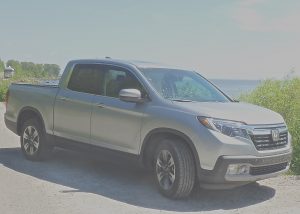 family requires, it might be the ideal second vehicle for a family that doesn’t demand a large pickup.
family requires, it might be the ideal second vehicle for a family that doesn’t demand a large pickup.
When Honda came out with the Ridgeline in 2005, it was a revolutionary product for the usually cautious Japanese auto company. This, after all, was a pickup truck, a purely American vehicle, and most Japanese companies found it comfortable to build vehicles Japan likes and sell them in the U.S. Read more
Smaller CUVs are easier to gift-wrap
Filed under: Weekly test drives, Autos
By John Gilbert
Looking for a last-minute Christmas gift for a very close loved one, like a wife, or a husband, or maybe a mom or dad, or a deserving son or daughter?
A real surprise…how about a new car? Choose a red one, and put a big bow on it. Kidding? Of course I’m kidding. Or…maybe not. It could be a family gift, in fact. The new second — or third — vehicle the family has needed for a long time as it grows, and outgrows, the family truckster that always used to be sufficient.
If you really wanted to take such a plunge, you’re in luck, because the SUV craze has died away, taking with it the big gas-guzzling SUVs of yesteryear. Replacing them are what they’re calling CUVs — Compact or crossover utility vehicles. They make much more sense, if they’re big enough, and often they are big enough. The key is that they have to haul some folks and some stuff, and they have to do it in all sorts of weather, so all-wheel-drive is a must.
In this effort, we are not going to make an all-out comparison, just a group of suggested alternatives that may or may not be surprising, just to lay out a few of the rapidly-expanding CUVs that have clogged the marketplace in the last couple of years. We’re assuming we all know about the “regulars” — the Escape, CR-V, RAV4, Tucson, Sportage, Jeep Cherokee, Renegade types — and we’re pointing out how the segment has expanded. Here are a few:
Buick Encore — The Buick Enclave is a large and luxurious midsize SUV that was the perfect alternative to the monster-truck SUVs, and Buick followed it up with the Encore, which is a much smaller, lighter and more economical crossover that still retains the trademark Buick look, but runs on a 1.4-liter turbocharged 4-cylinder tuned to either 138 or 153 horsepower. If this is big enough, fine. If you want something still lighter, you can go for a Chevrolet Trax, essentially the same vehicle with less luxury and sound deadening. The Encore and Trax show how global our auto world has become, both being built in the South Korea GM plant, with the engine and transmission coming from Korea as well, keeping prices in the mid-$20,000 range, and capable of reaching 30 miles per gallon. Buick is adding the Envision, placed between Encore and Enclave, with more room and less fuel efficiency.
Fiat 500x — Another example of global engineering, with FCA — Fiat Chrysler Automobiles — conspiring on a couple of neat all-weather vehicles. The Jeep Renegade is a cute ute that retains its Jeep qualities, and it is built by Fiat in Italy, where Fiat liked it so well it keeps some to sell in Europe. Then it took its own lovable little Fiat 500 and gave it a dose of steroids, which actually meant it was expanded and plunked down on the Renegade platform. Presto! The Fiat 500x, where “x” marks the spot for all-wheel drive and an expanded interior and rugged exterior. Fiat already was working with Chrysler on its 2.4-liter 4-cylinder, applying the Fiat MultiAir technology to make it perform better and more economically, so that’s the engine in both the Renegade and the 500x. Not a bad choice, if you like the Jeep go for the Renegade, if you like the 500, you’ll find the x model for $25,000, with 30 mpg capability and a fun to drive — anywhere — ability.
Infiniti QX30 — If Nissan has confused us all with its upscale Infiniti line and its new nomenclature, this one cuts through all the confusion and provides a fantastic sports car in CUV form with the QX30. (Remember, “G” is for sedans, and “Q” is for SUVs.) The QX30 is compact enough that some will find it cramped in the rear seat. If that’s not an issue, you will love this vehicle priced in the mid-$30,000 range. Nissan’s ability to make fine engines has been appreciated enough by Mercedes Benz that the two are actually working together on modern engine design and manufacture, with the same compact, high-performing 2.0-liter 4-cylinder turbo powering the GLA Mercedes and the QX30, with 208 horepower and 258 foot-pounds of torque. You will want the AWD version, which sits a tad higher but retains all the sportiness of the FWD model, and gets you up those icy hills. I have topped 32 miles per gallon with this rocket, in both the Mercedes and Infiniti models. Read more
New F-350 Super Duty well-mannered, huge
Filed under: Weekly test drives, Autos
By John Gilbert
Driving a pickup truck is not much different than driving a car. You sit up higher, of course, but you stick the nose in between the lane lines on the highway and you cruise along.
That’s always been my theory about test-driving pickup trucks, but I had never driven anything quite like the 2017 Ford F-350 Super Duty DRW 4×4 Crew Cab Lariat.
There I was, following my long-established rule of not being intimidated by the truck’s size, and I was on Interstate 35, just northeast of Duluth, heading in toward Duluth. I pointed the nose of the big Ford between the lines of the lane, and I cruised along, easily and with total confidence and assurance. And then an alarm went off, gently, but persistently. Then it quit. Then it sounded again, and again.
Finally, I realized what it was — the lane-departure warning in the F-350. I wasn’t intending to be wandering across the dotted line into the adjacent lane, nor was I intending to wander across the outside line to the shoulder. I never even knew I did it, and I can guarantee that I never did put the front tires on or over the lines on either side, but it’s not enough to pay attention to the front end on the F-350. It’s also important to pay attention to where those rear tires are, because they don’t necessarily just following along obediently.
The F-350 Super Duty has big dual rear wheels — “dualies” — to give added stability and traction if you happen to be towing, say, a house. Or a small office building. Or a large Lake Superior-going yacht. Checking the side-view mirrors, those outer wheels stick out about an extra foot from the fuselage of the truck. And I use the word “fuselage” advisably. Read more


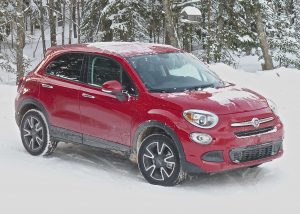
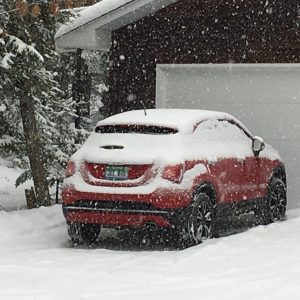
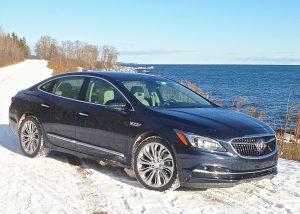
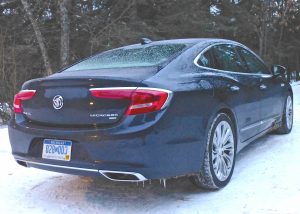
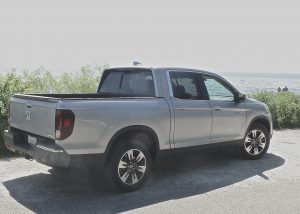

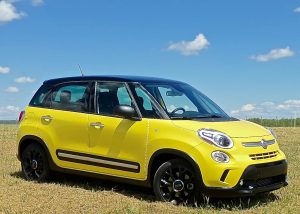
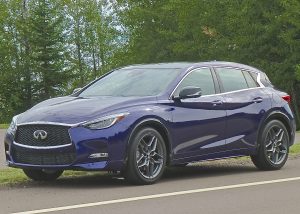
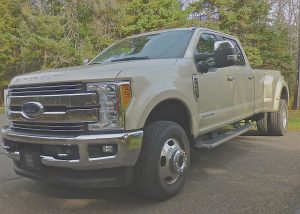
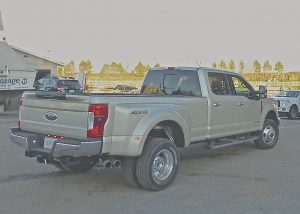
 John Gilbert is a lifetime Minnesotan and career journalist, specializing in cars and sports during and since spending 30 years at the Minneapolis Tribune, now the Star Tribune. More recently, he has continued translating the high-tech world of autos and sharing his passionate insights as a freelance writer/photographer/broadcaster. A member of the prestigious North American Car and Truck of the Year jury since 1993. John can be heard Monday-Friday from 9-11am on 610 KDAL(www.kdal610.com) on the "John Gilbert Show," and writes a column in the Duluth Reader.
John Gilbert is a lifetime Minnesotan and career journalist, specializing in cars and sports during and since spending 30 years at the Minneapolis Tribune, now the Star Tribune. More recently, he has continued translating the high-tech world of autos and sharing his passionate insights as a freelance writer/photographer/broadcaster. A member of the prestigious North American Car and Truck of the Year jury since 1993. John can be heard Monday-Friday from 9-11am on 610 KDAL(www.kdal610.com) on the "John Gilbert Show," and writes a column in the Duluth Reader.